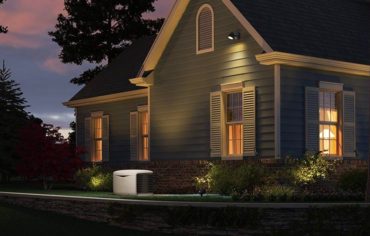 Generators are critical during severe weather events, when the power can go out, as well as bringing power to remote job sites and in disaster recovery and emergencies.
Generators are critical during severe weather events, when the power can go out, as well as bringing power to remote job sites and in disaster recovery and emergencies.
“Not having power when you need it is frustrating, so a generator can provide emergency backup power at a reasonable cost. But, it’s important to follow all manufacturer’s instructions when using one,” said Kris Kiser, president and CEO of the Outdoor Power Equipment Institute (OPEI), an international trade association representing small engine, utility vehicle and outdoor power equipment manufacturers and suppliers. “For instance, never place a generator in your garage or in your home. The generator should be a safe distance from your home and not near an air intake.”
More tips from OPEI:
Take stock of your generator.
Make sure equipment is in good working order before you start using it.
Follow all manufacturer’s instructions.
Review the owner’s manuals for your equipment, if possible (you can look manuals up online if you cannot find them), so you can operate your equipment safely.
Have the right fuel on hand.
Use the type of fuel recommended by your generator manufacturer. It is illegal to use any fuel with more than 10 percent ethanol in outdoor power equipment (for more information on proper fueling for outdoor power equipment, visit www.LookBeforeYouPump.com).
If you are using fuel that has been sitting in a gas can for more than 30 days and you cannot get fresh fuel, add fuel stabilizer to it. Store gas only in an approved container and away from heat sources.
Ensure portable generators have plenty of ventilation.
Generators should NEVER be used in an enclosed area or placed inside a home or garage, even if the windows or doors are open. Place the generator outside and away from windows, doors, and vents that could allow carbon monoxide to come indoors.
Keep the generator dry.
Do not use it in wet conditions. You can cover and vent your generator. You can buy model-specific tents online or generator covers at home centers and hardware stores.
Only add fuel to a cool generator.
Before refueling, turn the generator off and let it cool down.
Plug in safely.
If you don’t yet have a transfer switch, you can use the outlets on the generator. It’s best to plug in appliances directly to the generator.
If you must use an extension cord, it should be heavy-duty and designed for outdoor use. It should be rated (in watts or amps) at least equal to the sum of the connected appliance loads. Make sure the cord is free of cuts. The plug should have all three prongs.
Install a transfer switch.
A transfer switch connects the generator to your circuit panel and lets you power hardwired appliances. Most transfer switches also help you avoid overload by displaying wattage usage levels.
Do not use the generator to “backfeed” power into your home electrical system.
Trying to power your home’s electrical wiring by “backfeeding” – where you plug the generator into a wall outlet — is reckless and dangerous. You could hurt utility workers and neighbors served by the same transformer. Backfeeding bypasses built-in circuit protection devices, so you could damage your electronics or start an electrical fire.
Install a battery operated carbon monoxide detector in your home or business.
This alarm will sound if any carbon monoxide comes into the building and alert you.
For more safety tips for outdoor power equipment visit opei.org/safety-tips.























